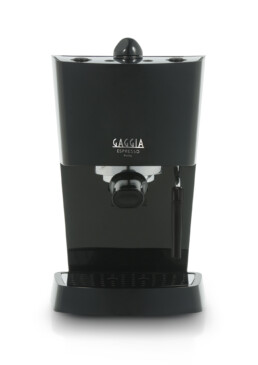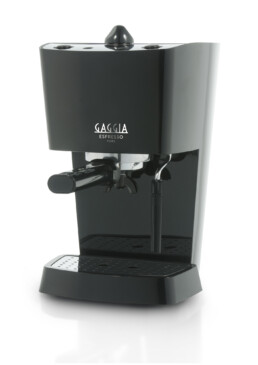Gaggia Espresso
Great products are created by balancing both design and engineering. It is in design that we break through established ideas and find new solutions, and the engineering that we make the design functional and able to be made in series.
By designing with engineering in mind, we can streamline this process, therefore creating products from concept that have the technical necessities of engineering from the beginning.
Client
Gaggia
Service
Design, Engineering
Year
2006
“We began developing this way of working when we saw many clients coming to us after their product design failed to be realized. Often concept designs are not based on geometry, and the design that is accepted by the client is completely re-designed in the engineering phase. This wastes the client’s time and money. So we work with a different strategy. One that blends design and engineering from the original concept,” says Fabio Rezzonico.
“We design with engineering in mind,” continues Rezzonico. He believes that by knowing the manufacturing limits, reliable materials and finishes, and understanding the mechanics of appliances, they can quickly arrive at tangible and workable solutions. He continues, “By working immediately in 3D and in true geometry, we design intelligently from the beginning.”
Rezzonico Design has been working with this strategy for many years. It is his belief that this experience of designing and engineering helps them find the right solution quickly.
The Espresso Coffeemaker from Gaggia is one example of designing with engineering in mind.
The objective of the project was to have a single piece “monolithic” housing that would fit around the pre-assembled mechanical elements. Thus creating a one step assembly. “This approach helped us lower costs by manufacturing fewer pieces of the housing, and saving a lot of time on the assembly,” explains Rezzonico. “What is most successful about this idea is that the design benefits from the engineering, because it is one single piece, it is sleek and clean.”
Espresso is not the only example that Rezzonico Design has of their philosophy of design with engineering in mind. “I think that I have always designed this way, even if I didn’t think of it as a philosophy. By understanding engineering you understand the limits of a certain product.
But by understanding the limits, you also can understand when you can overcome them, when they can be flexible.
This confidence in engineering allows us to make bold and creative design solutions that work.”
Why not innovate?
Although the Espresso Coffeemaker is a simplified design, the original idea is anything but simple. “By eliminating lots of different parts we created a clean and graceful object. However, we believed that it would be even better adding a bit of complexity back into the design. Through co-injection molding we could do just that,” says Fabio Rezzonico.
Co-injection molding is a two-layer injection process comprised of a “skin” material (the external material) and a “core” material (which is structural). The skin material is injected first into the mold cavity, then a core material is injected immediately afterward. This allows for a product to have a beautiful external material that may be less structural, and a stronger core material so the structure remains durable.
“Our idea was to make the skin material out of a high-gloss glass finish over a colored structural core. The skin material would be like a layer of glass over the core giving us the visual effect of two layers: a colored body with a glass overlay,” continues Rezzonico, “it is a great way to add interest on a pure and simple shape.”
The possibility to adopt this technology was analyzed with GE Plastics in 2005 to determine the feasibility of flow-molding, and the total cost estimate of using this manufacturing innovation. The final conclusion was that although the aesthetic benefits to the product were significant, the additional investment cost exceeded the amount pre-determined for the manufacture of this product.

